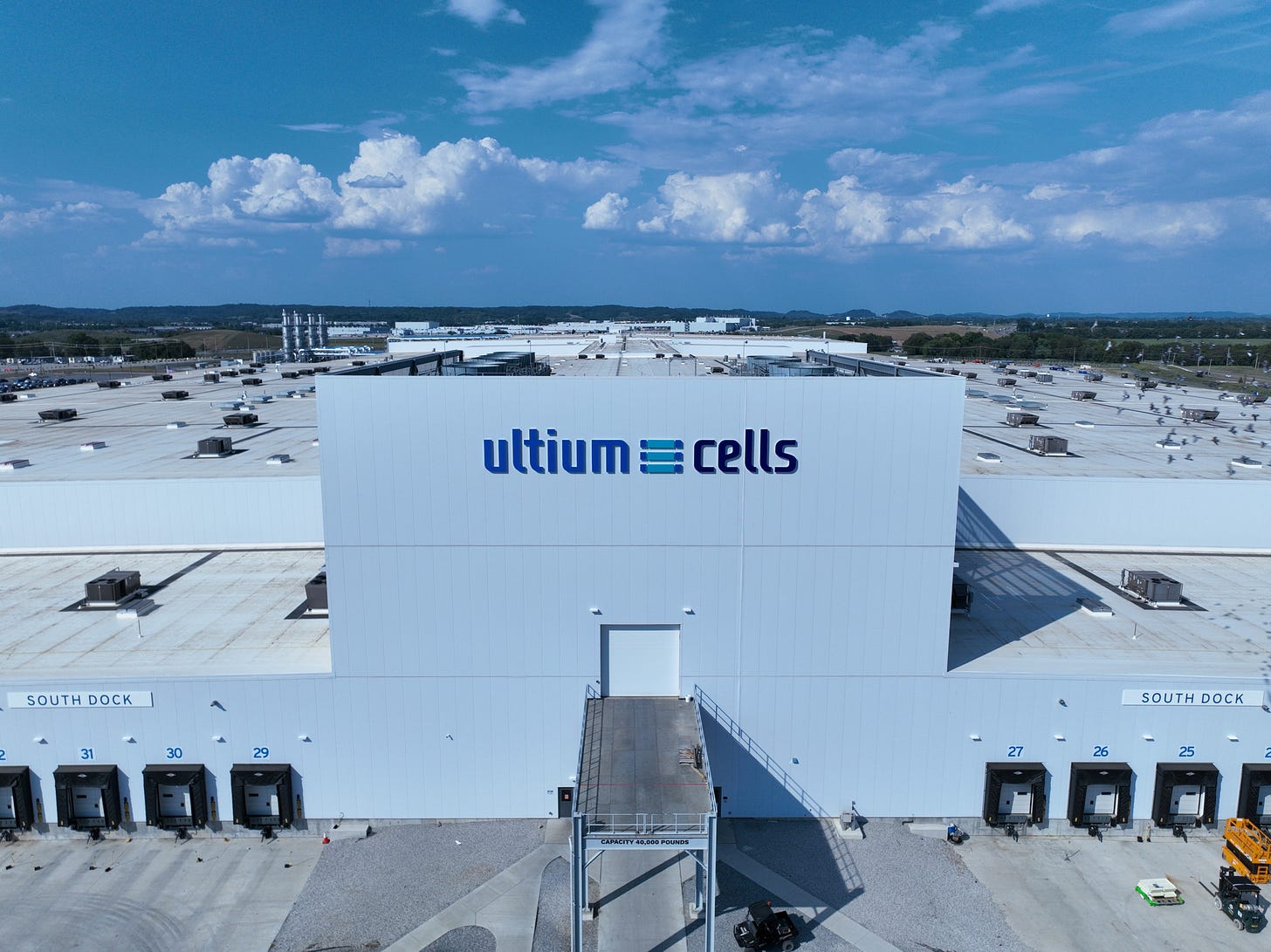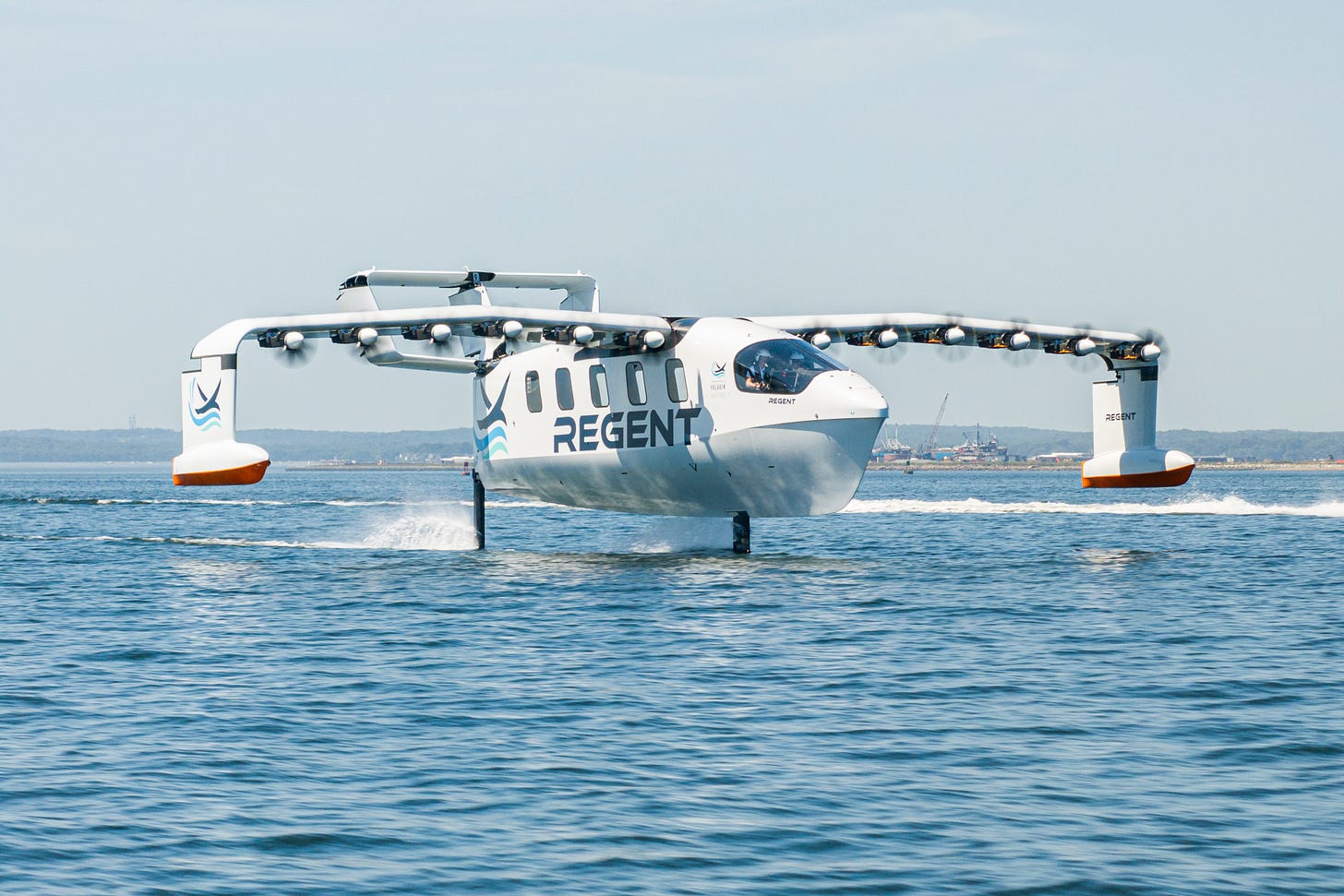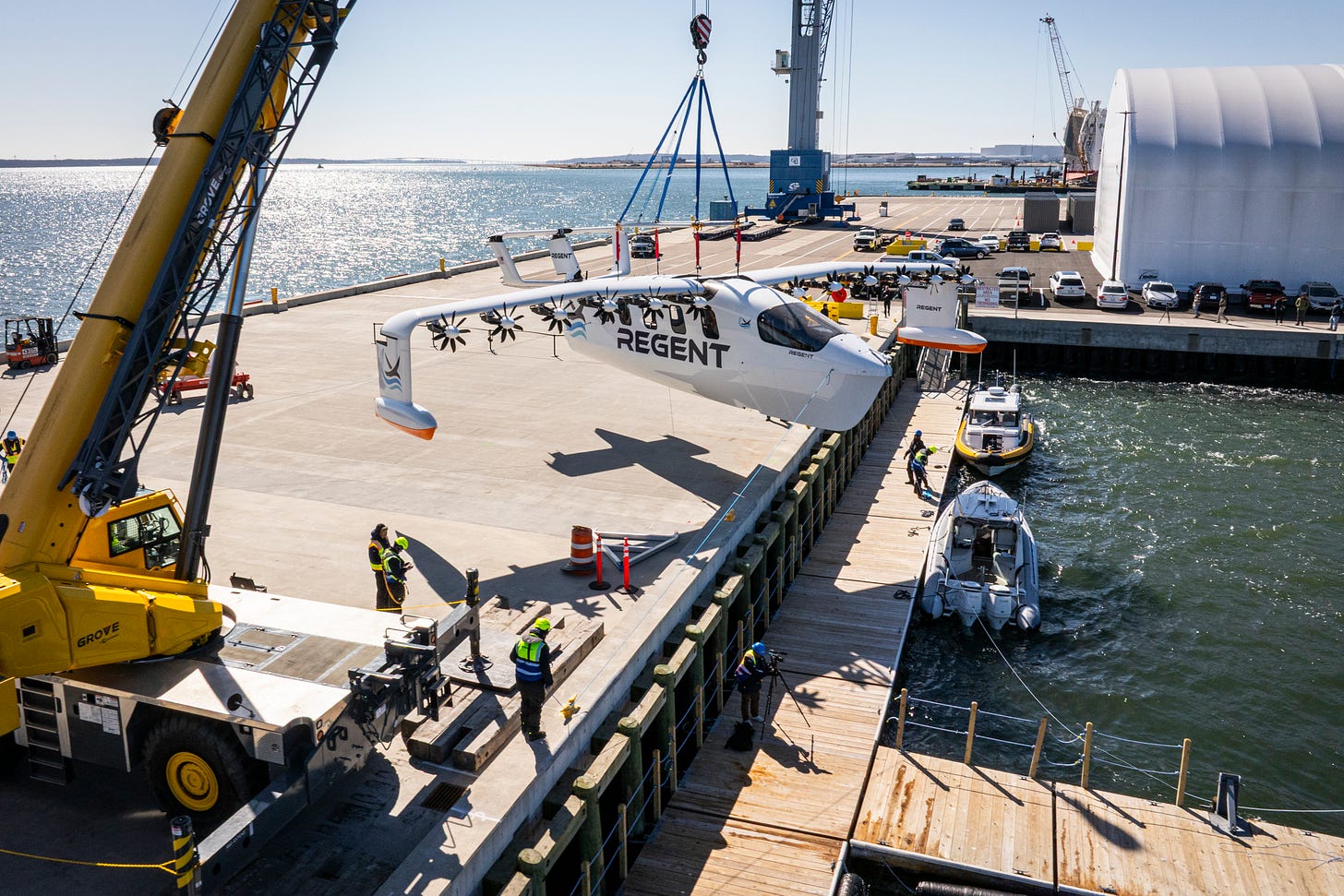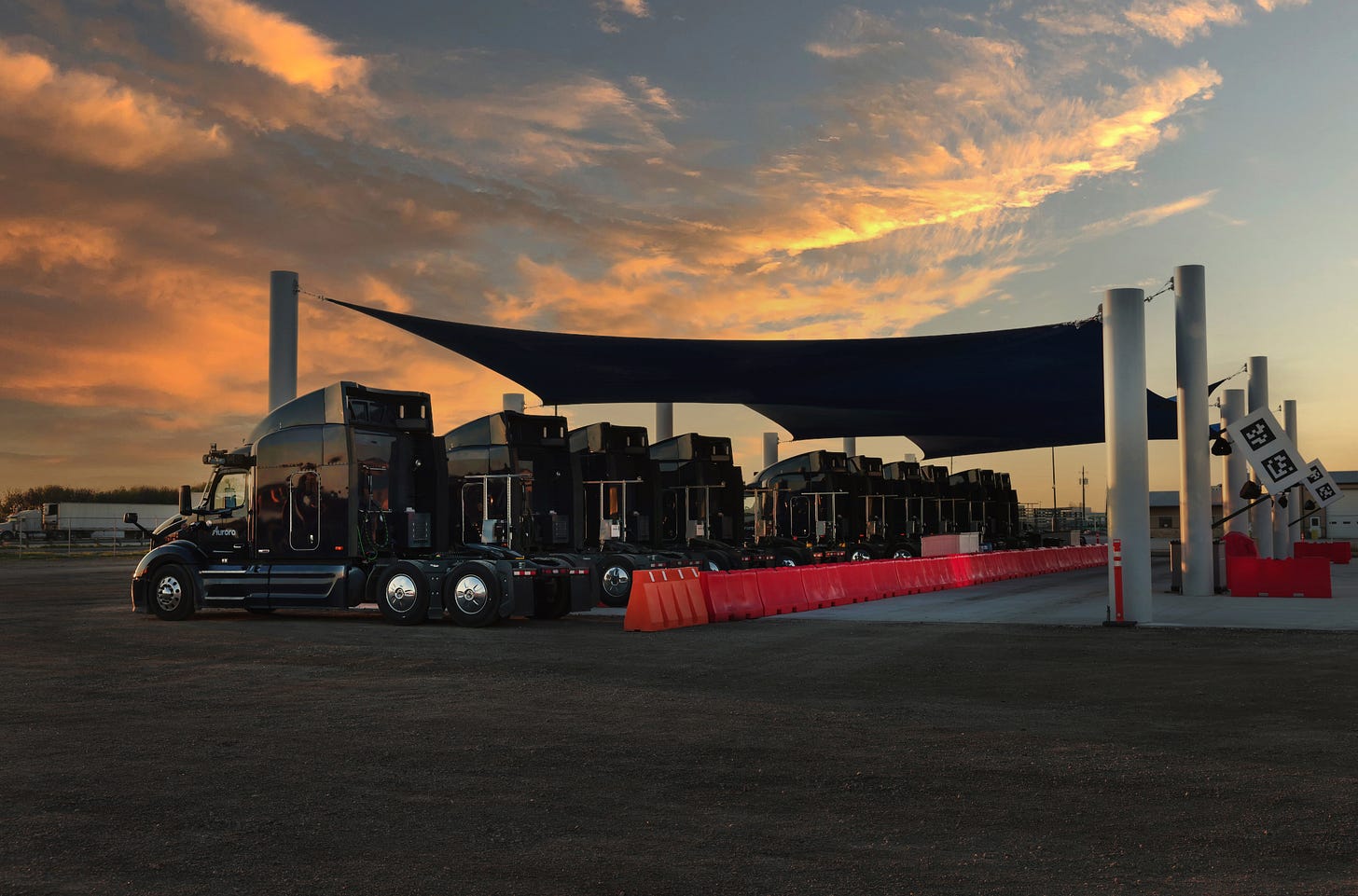General Motors adds scaffolding to its battery strategy
Plus: Regent's sea gliders are a marvel; Aurora and Paccar appear stuck on self-driving trucks

Welcome back to Velocity. Glad to have you here. If you like what you read, please subscribe below. Let’s get going.
On tap this week:
These are hardly halcyon days for battery companies, given federal policy shifts that thwart the EV transition. But General Motors has placed further bets on batteries and electric vehicles being at the heart of its long-term future.
The friction between self-driving tech company Aurora Innovation and manufacturing partner Paccar seems further entrenched following the latter’s second-quarter earnings call.
I caught up with Regent co-founder Billy Thalheimer in Detroit during Reindustrialize and checked out a 12-seat mock-up of the company’s Viceroy sea glider. Can wing-in-ground vessels really forge a new transportation mode? I think so.
We start with the recent changes in governmental policy which eliminated the $7,500 EV tax credit for consumers at a time electric vehicles account for 8 percent of new car sales, according to the latest data from Cox Automotive.
The change means an electrification transition “got a little harder to achieve over the last few weeks — in the short term,” concedes General Motors battery chief Kurt Kelty. “But in the long run, we all know where we’re going. The future is an EV future.”
GM is banking on that in a big way.
The company rolled out several significant developments over the past month. Those include:
A memorandum of understanding with Redwood Materials to supply both new and second-life EV batteries for energy-storage projects.
Plans for its Ultium Cells joint venture with LG Energy Solution to produce lower-cost batteries in Spring Hill, Tennessee, starting in 2027.
Further work on LMR prismatic battery cells with an eye toward production at commercial scale.
The work with Redwood Materials helps lay groundwork for powering the AI data centers which might consume as much as 12 percent of all U.S. electricity by 2028.
And the work in Spring Hill to make lithium iron phosphate (LFP) batteries in Spring Hill could be a linchpin in offering more affordable EVs at a time Cox Automotive says the average electric vehicle costs $56,910, all while diminishing America’s reliance on foreign battery materials and supply.
Kelty joined me on this week’s Shift podcast to delve into the details. Here’s a snippet of our conversation on the Ultium Cells work and production slated for 2027:
“LFP is really good chemistry for the affordable vehicle, with a small battery pack that doesn’t need a whole lot of kilowatt-hours in there,” Kelty said. “That’s where the sweet spot is. The LFP in the U.S. right now is all coming from China, so this is an opportunity where we can localize production and get these into our vehicles as quickly as we can.”
No doubt, the U.S. remains far behind. Approximately 95 percent of LFP batteries went into vehicles produced in China, according to International Energy Agency, while only 3 percent were manufactured in the United States.
But GM’s work should not be overlooked. It is an example of a domestic automaker looking past the politics of the moment and laying down scaffolding to start catching up.

You can listen to my entire conversation with Kurt Kelty here.
It is worth noting this conversation marks the third week in a row in which we discuss the nuances of the battery future on the Shift podcast. Cal Lankton, chief commercial officer at Redwood Materials, joined me for a look at the company’s burgeoning energy-storage business earlier this month.
Last week, Factorial Energy CEO Siyu Huang discussed the company’s pursuit of solid-state batteries, work with Mercedes-Benz, Stellantis and Hyundai, and recent shipment of solid-state cells to drone manufacturer Avidrone Aerospace.
Are Aurora and Paccar’s self-driving trucks stuck in neutral?
There appears no imminent fix for the stalemate between self-driving truck provider Aurora Innovation and Paccar, one of its big truck manufacturing partners.
You may remember Aurora deployed driverless trucks in late April using Paccar’s Peterbuilt trucks. But weeks later, Paccar made public objections to Aurora’s use of its trucks in commercial service, and the company reinstituted a human “observer” back in the cabin.
An astute analyst asked Paccar CEO R. Preston Feight about the company’s concerns during last week’s second-quarter earnings call. Feight cast further doubt on the company’s interest in autonomy.
In reference to autonomous trucking, he said, “I don’t think that’s tomorrow,” even though autonomy was not some far-off future project but precisely part of the present day when Aurora launched driverless, commercial service on April 27.
Later, Feight underscored his desire for humans aboard.
Safety is the company’s “fundamental foundational principle,” he said. “It will remain as a true north for us. So having a driver-in seems like the smartest idea. That’s how we’re operating the trucks.”
Doesn’t sound like there’s much nuance there. Aurora hosts its second-quarter earnings call later this afternoon, and I’d expect an update on the company’s work with Volvo on its autonomous VNL platform.

Regent’s electric-powered craft gliding ahead
Long ago, I found a dusty old book in the corner of a used-bookstore called “Hydrofoils and Hovercraft” by Bill Gunston. Published in 1969, it posed the question, “Why, in an age of jumbo jets and giant tankers, do we need hydrofoils, hovercraft and tracked air-cushion vehicles?”
Fifty-six years later, Billy Thalheimer has a compelling answer.
Thalheimer is CEO and co-founder of Regent Craft Inc., a startup building electric sea gliders that can float, hydrofoil and then fly in ground effect, an area of reduced aerodynamic drag within a wingspan of the surface.
Think sleek, flying boats which can smoothly glide above the waves and achieve speeds more akin to airplanes than ferries.
I chatted with Thalheimer during Reindustrialize in Detroit in mid-July, held just a few weeks after President Trump’s “Big Beautiful Bill” slashed EV tax credits for consumers and seemingly weakened an electrification transition. Yet there was Regent, an acronym for “Regional Electric Ground Effect Nautical Transport,” showcasing an alternate way in which electrification is taking shape across transportation.
“Electrification is amazing,” Thalheimer told me. “The sustainability, the low cost, the low noise, the high safety. We can take all that goodness and we can bring it into the maritime domain.”
The wing-in-ground craft have more maritime DNA than aviation — they’re regulated by the Coast Guard rather than the Federal Aviation Administration in the United States. Regent hydrofoiled for the first time during testing in early July. The vessels are and are scheduled to arrive in both passenger-carrying and defense-minded configurations starting in 2027.
Batteries are one of the company’s next steps. Regent is in the final stages of selecting its battery supplier, Thalheimer said. While he examined a variety of propulsion options, he said batteries offering substantial savings compared to ongoing maintenance costs in traditional short-haul aviation operations.
They’ll power the Viceroy craft, a mock-up of which was on display in Detroit. The Viceroy can carry 12 passengers and two crew members.
“This is the largest electric thing ever to fly,” he said.
For its defense business, unveiled at Reindustrialize, Regent intends to offer a hybrid craft that combines batteries and turbogenerators. That allows for far greater range of approximately 1,600 miles, which the Department of Defense finds crucial for Pacific operations, Thalheimer said. The company has worked for the past two years with the U.S. Marine Corps.
He co-founded the company in 2020 after growing frustrated by limitations he encountered while working on eVTOL aircraft at Boeing subsidiary Aurora Flight Sciences. FAA certification for those aircraft involves a long, expensive slog, and many of the aircraft have ranges of 100 miles or less.
Regent’s vehicles will reach the market with 180 miles of range, and Thalheimer foresees a pathway toward 400 miles of range as well as larger craft. Both will help the company compete against short-haul aircraft on routes which are practically “too short to drive and too long to fly,” he said.
The company plans to manufacture in a 235,000-square foot Rhode Island factory and sell the craft to operators who will determine which routes make sense for initial deployments.
While there’s nothing firm on that front, it is easy to envision the possibilities. Miami to Key West, Los Angeles to San Diego, Sag Harbor to Martha’s Vineyard, the Hawaiian Islands … Regent anticipates global deployments.
Investors include Mark Cuban, 8090 Industries, Lockheed Martin Ventures and the Japan Airlines Innovation Fund. The company has raised more than $90 million in funding overall, and holds approximately $10 billion in orders for 600 craft from aviation, ferry and freight realms, Thalheimer said.
Much like technology invented for Formula 1 Racing trickled into the mainstream auto industry, he said innovations which started in the America’s Cup sailing competitions are finding their way aboard the Regent vessels.
“We’ve got a team of these incredible boat builders, hydrofoil designers, naval architects,” he said. “It’s a really novel team using advanced construction methods and propulsion methods. There’s really not been an outlet for it until now.”

And finally …
Why does Bill Ford Jr. keep a light green 2005 Ford Escape hybrid in his private car collection, among more historic Mustangs and GTs?
You’ll find the answer in this story from my Automotive News colleague Michael Martinez, who talked to three of Ford’s children for this profile of the Ford Motor Co. scion.
This was a terrific story that captured a half-century of Ford’s legacy — still ongoing — at the automaker which bears his name, and I hope you get a chance to check it out.


